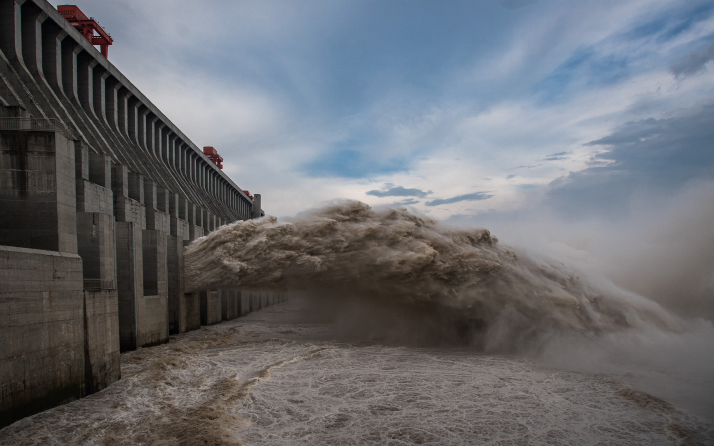Water gushes out from the Three Gorges Dam in central China's Hubei Province, central China on August 19. The inflow of water at the Three Gorges reservoir reached the record high 72,000 cubic meters per second that day (XINHUA)
Alongside the impacts of the novel coronavirus disease (COVID-19), recent widespread flooding across south China is also adding complications to the national fight against poverty. China has steadily pushed ahead with poverty alleviation efforts in the first half of 2020, despite the adverse impacts of COVID-19. However, the arrival of seasonal rains has brought floods to much of south China, displacing more than 63 million people since June.
Over this period, the Central Committee of the Communist Party of China has led a coordinated effort by local governments to mitigate the effects of the flood on affected communities. Following the principle that nothing matters more than people's lives, local authorities have implemented a raft of disaster management programs aimed at epidemic prevention and control, hygiene, living and business assistance, and compensation to restore communities' lives and livelihoods as quickly as possible. Government departments are also offering support and guidance to farmers to ensure continued production, as well as providing psychological assistance, counseling and social care to those in need.
Ensuring those who have risen out of poverty don't return due to natural disasters is a crucial component of the fight against poverty and building prosperous societies. Another crucial element is the timely distribution of food and other daily necessities, as well as support to children, the elderly, disabled and other disadvantaged groups.
This is an edited excerpt of an article originally published in People's Daily on August 13
(Print Edition Title: Flood Control and Post-Disaster Recovery)
